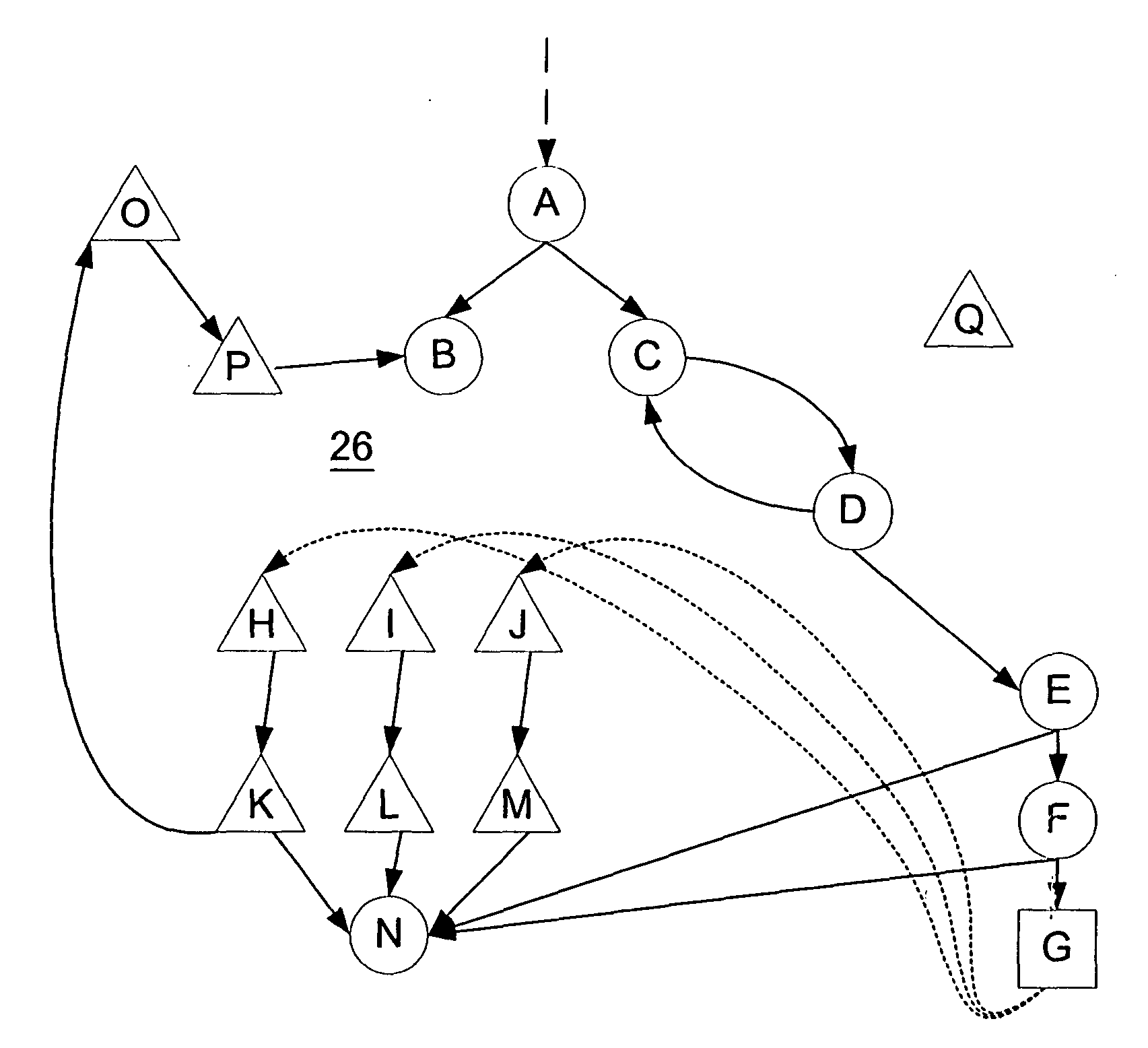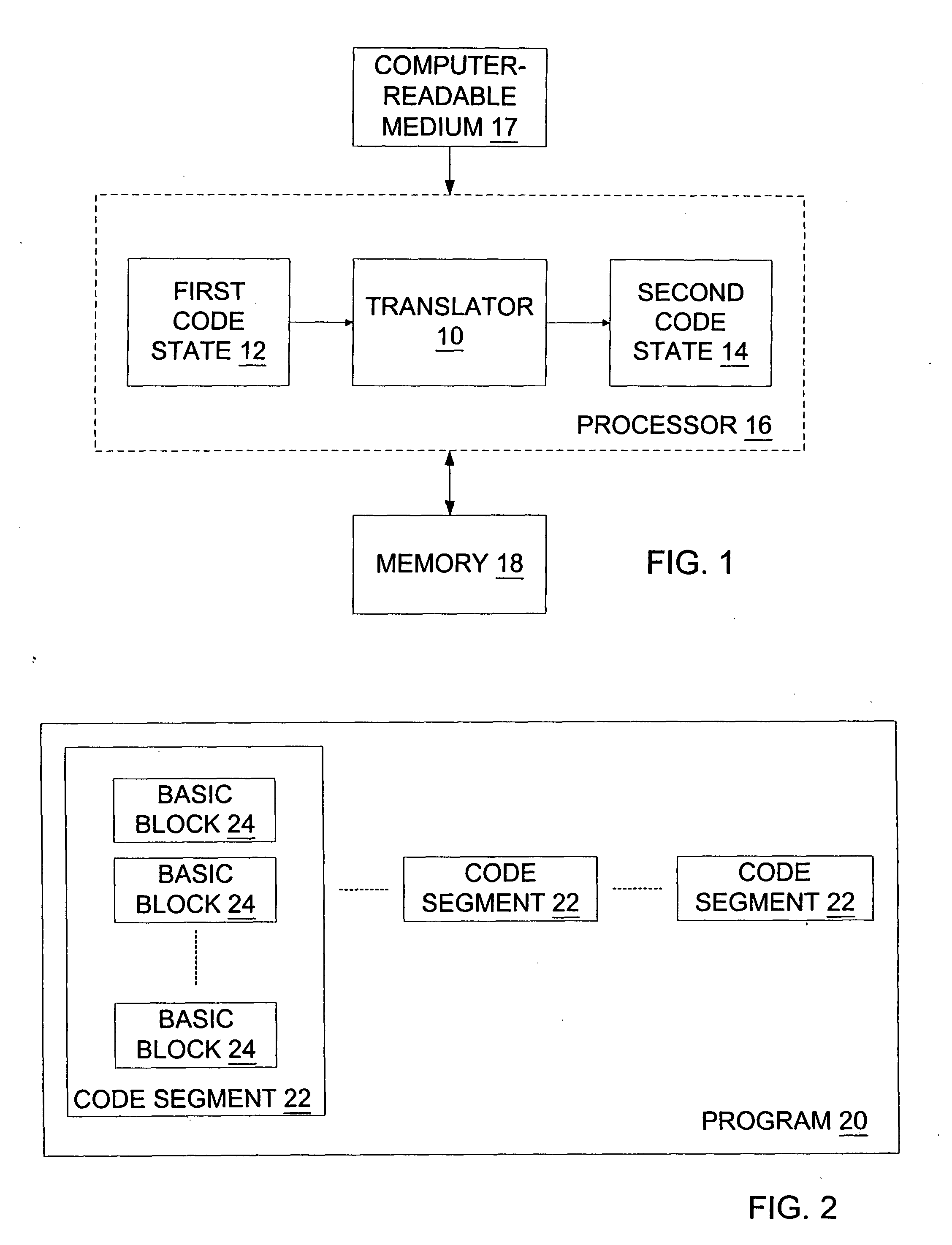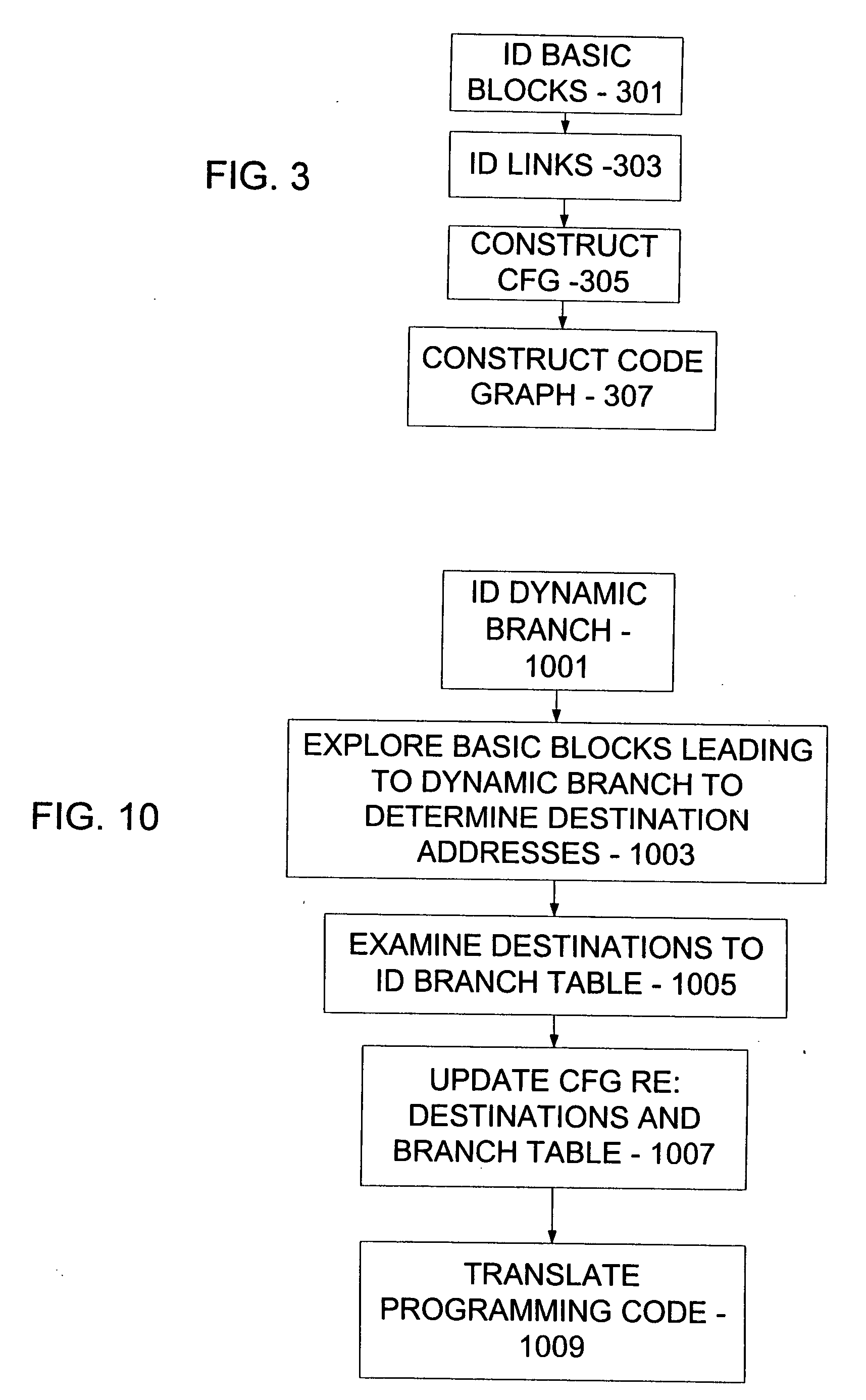Determining destinations of a dynamic branch
a dynamic branch and destination technology, applied in the direction of program control, next instruction address formation, instruments, etc., can solve the problems of increasing complexity of tasks, increasing translation difficulty, and exacerbated problems
- Summary
- Abstract
- Description
- Claims
- Application Information
AI Technical Summary
Benefits of technology
Problems solved by technology
Method used
Image
Examples
example
[0097]Assume the following three blocks 24 flow sequentially in a program 20, where the last block 24 ends in a dynamic branch:
Block 1:
[0098]
VALC A(get value of a variable A and place on stack)DUPL(duplicate value on top of stack and place on stack)LT 0(place value 0 on stack)LESS(consume top two values on stack and compare todetermine (in effect if A is less than zero), placecomparison result on stack)BRTR(consume top of stack and branch based thereon or elsefall through)
Block 2:
[0099]
DUPLLT 10GRTR(consume top two values on stack and compare to determine(in effect if A is greater than ten), place comparisonresult on stack)BRTR
Block 3:
[0100]
LT 50(place pre-defined offset value 50 on the stack)ADD(consume top two values on stack and add, place resulton stack)DBUN(consume top of stack and employ as address for dynamicbranch)
Accordingly, in block 1, the value A is tested to see if it is out of bounds at the lower end (i.e., less than zero), and in block 2, the value A is tested to s...
PUM
 Login to View More
Login to View More Abstract
Description
Claims
Application Information
 Login to View More
Login to View More - R&D
- Intellectual Property
- Life Sciences
- Materials
- Tech Scout
- Unparalleled Data Quality
- Higher Quality Content
- 60% Fewer Hallucinations
Browse by: Latest US Patents, China's latest patents, Technical Efficacy Thesaurus, Application Domain, Technology Topic, Popular Technical Reports.
© 2025 PatSnap. All rights reserved.Legal|Privacy policy|Modern Slavery Act Transparency Statement|Sitemap|About US| Contact US: help@patsnap.com



